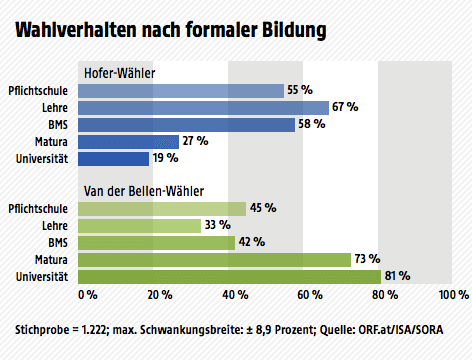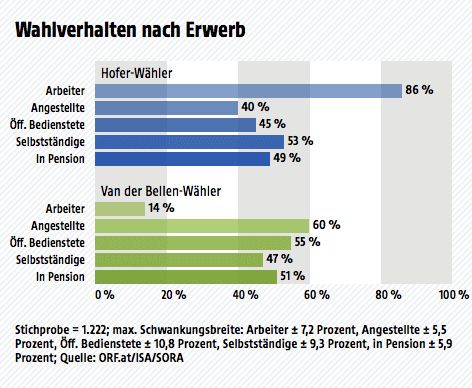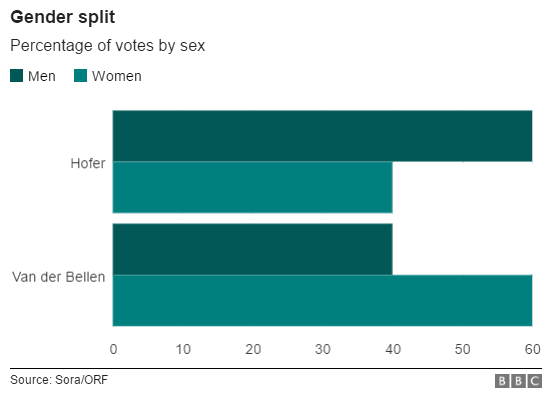Here are some comments that deserve to be promoted to the main blog.
Mr Zero Man:
For what its worth, here is an anecdotal account:
I was a dedicated Marxist as a student in the US (early 2000s). Studying dialectics, believing in a workers’ revolution, calling each other comrade, all of that. I come from a South European country where a lot of people are still communists, there are communists in parliament, it is common. My impression in the US at the time was that marxism was dead there. There was pretty much no marxist elements in any of the social science or humanities courses I took (I was a philosophy major). The postmodern liberal agenda which was evident in social sciences & humanities at the time was to me completely alien to marxism. I didn’t feel any crossover. I graduated leaving the US academic world feeling it was an explicitly anti-marxist and anti-communist place.
Some details: Me and my small group of 4-5 friends were libertarian Marxists at the time – we were familiar with Lenin but we were of the opinion that the Bolsheviks had betrayed the workers; we identified with the Kronstant rebellion, with the Paris Commune, and with the anarchist movements in Catalunia and Ukraine. We generally considered anarchists to be more principled but never having achieved the higher theoretical standard of Marx. Socially we admired the anti-colonial movements in Cuba, Algeria, Vietnam etc even though we felt those revolutions had all been betrayed by their leaders, which is how we felt about the USSR and China as well. We admired small guerilla groups like Red Brigades, RAF, 17N and Weatherman for their authenticity and I guess their youthful outlaw sex appeal. The French May 68 and the Situationist interpretation of it was very important to us. In the US we got on much better with anarchists than we did with the Leninists or Maoists who still hung on to little ineffectual communist parties. There was an anarchist bookshop that we used to go to, and used to hang out with anarchists. Anarchists were at heart just a tribal youthful in-group based around punk music and veganism but there was quite a few of them. We had the original Black Panthers in high regard, but we couldn’t get anywhere with the blacks we tried community outreach to because of how different our mentalities were (in contrast to the 60s-70s when there still were communist blacks).
Theoretically I adhered to the line of the young Marx, agreed with a lot of the Frankfurt School interdisciplinary approach, but even more so with the French Situationists Debord and Vaneigem. I read early Lukacs and some Hegel. I thought Reich’s contribution was central. And to a lesser extent Fromm. I liked Chomsky as a describer of US foreign policy but he wasn’t a theorist.
This little microcosm of ours had no influence from the university, from the faculty, from the curriculum. Like I said, I experienced those years as if Marxism was completely dead in the US and especially within academia. All the 3rd wave feminist, pro-gay, politically correct liberal stuff was to me at the time completely irrelevent and unconnected to Marxism, it was bourgeois identity politics that didn’t grasp capitalism and the state as the main enemy. There were very few contemporary thinkers who had proper marxist dialectical thought behind them. Negri and Hardt were a bit trendy but I thought they were full of shit. Zerzan has a lot of Marx in his theorizing and I still like how he thinks but he went up a dead-end street. Apart from Fredrik Jameson the only other real American marxist thinker in the tradition of the Frankfurt-School I can think of is Christopher Lasch and he ended up a social conservative, which I think is very interesting because I took a similar path completely independently.
The way “Marx” and the evil “Frankfurt school” are tossed around on NRx and the manosphere as strawmen and proofs of conspiracy still annoys me, it’s not rigorous in the least.
The claim “they literally believe the white working class should be gassed” doesn’t match my experience at the time. As marxists we usually did the opposite, we idealized the working class, white or black, and (as you can probably guess) most of us were middle class and higher. We believed in direct democracy and so we considered the working classes as intrinsically noble people who would make the best choices if only they achieved the revolutionary consciousness that education and the media were holding them back from.
Note again this is just anecdotal personal experience, but I would be really surprised to find evidence that there is significant marxist influence in US academia or the greater Cathedral. Marxism and SJW-liberalism have common ancestors but very little overlap between them.
Actual Marxists by definition can’t believe that the white working class should be gassed, unless they take the Weather Underground’s line. Note that the name ‘Weather Underground’ is a reference to a Bob Dylan song.
Mr Zero Man:
Re Marcuse’s influence on the New Left. The main factors behind the New Left were the civil rights movement and the anti-war movement, which were mostly grass-roots American liberal movements that never included significant critique of capitalism. I don’t buy that he was a big influence over it. Sure he wrote some books that were popular in student-left circles but it’s difficult to gauge their actual influence. My impression is that they had very little, and the label “guru of the Left” is an overstatement. His works were too high-brow and required an in-depth appreciation of Hegelian Marxism and Freud. They make for very difficult reading. Examples of contemporaries with much bigger influence were singers like Dylan and Lennon, and to a lesser extent Alan Ginsburg and Timothy Leary.
For the more radical anti-capitalist side, the figures that had an actual following at the time were the sexier, flamboyant, more “hip” revolutionaries like Abbie Hoffman, Eldridge Cleaver and the student leaders that later formed Weatherman. Weatherman, like many american marxists at the time, accepted the Black Panther Party as the revolutionary vanguard. The BPP belonged to the Maoist/Third Worldist tradition and was not influenced by the Western Marxism of Marcuse. The SDS was a large movement, more liberal than radical, but it lost most of its grass-roots support when the leadership was taken over by the Weathermen. Weathermen were explicitly against Marcuse, they regarded him a sell-out and armchair radical, (Bernadine Dorn insulted him to his face publicly as I recall), and after disagreements with the Panthers they tried to assume the mantle of revolutionary vanguard themselves, before fading out of relevance completely. Like the Panthers their theoretical line was Third Worldist and uninfluenced by Marcuse’s school of thought – they combined their traditional “vulgar Marxism” with all the hip counterculture psychedelic free-love ideas that were floating around, in order to attract young people. This broader youth movement, by the way, is what actually stuck around in various forms and had a tangible influence on american society towards a non-traditional direction. “Sex drugs and rocknroll”, not Marxism.
When civil rights was absorbed into the political mainstream and the draft ended, the New Left effectively ceased to exist as a historical force.
As for Marcuse’s influence on the academic world – I’m not convinced that he had any serious influential followers. I don’t see it. I would like to find evidence to the contrary.
I think the case is more like this:
A 70s feminist academic writes a dumb paper about feminism. To prop up her weak paper, she uses some footnotes and quotes from Marcuse so it seems more serious and weighty. Academics do that shit all the time.
That doesn’t mean she follows Marcuse’s political framework. It just means he is an approved authority to use some quotes from when it is useful, he’s just a status indicator. Marcuse’s position was unabashed Marxist, i.e. the point is the abolition of capitalism, wage labour and the commodity form. If that is absent, then his influence is just peripheral. It’s no longer Marxism. The real influence in this example would therefore be from feminism. It’s a different strand of thought.
To give a similar example. What is Evola’s influence on NRx? I would say it’s peripheral. Some NRx writers will have read a couple of his more well-known books, some of them will quote him from time to time, maybe some play a little bit with one of his ideas. But Evola as a thinker has a very specific metaphysical framework regarding Transcendence, Being/Becoming et al. He has a very specific political framework of the priestly and military castes and how their temporal authority is tied to his metaphysical framework. If your system doesn’t accept the whole framework, you can’t really say that Evola is a central influence on it. But “Evola is a major influence on NRx” is the kind of half-assed claim a journalist who doesn’t know what he’s talking about might say. I would argue Marcuse’s role in leftist thought is roughly equivalent. Hit me with counter-evidence if you have it though.
I know @cuttlefish_btc (CW: commie) thinks Leary had deep state ties, but I don’t know anything about that.
There was a guy called Maoist Jeff in the Something Awful commie diaspora a few years ago, who took the M3W line so far that he once said it would be good if everyone in the First World were killed. Someone pointed out that he lived in Texas and he went lmao, my life is worth nothing compared to the revolution. For anthropological interest: the group blog he posted on is still online.
The Dissenting Sociologist:
Nydwracu:
Forget Marcuse. The book that, more than any other, formalized the shift on the Left away from the White working class cause- indeed, altogether away from Marx- and towards today’s SJW identity politics was “Hegemony and Socialist Strategy” by Ernesto Laclau and Chantal Mouffe.
From the Wik blurb:
“The position outlined in this book is usually described as post-Marxist because it rejects (a) Marxist economic determinism and (b) the view that class struggle is the most important antagonism in society…A key innovation in Hegemony and Socialist Strategy was Laclau and Mouffe’s argument that left-wing movements need to build alliances with a wide variety of different groups if they are to be successful and establish a left-wing ‘hegemony’.”
And get a load of this:
“Laclau subsequently used [his] account of discourse to re-consider the nature of identity, arguing that all political identities are discursive – even if they are experienced by individuals as ‘natural’ […] For example, though an individual may think that they are just ‘born male’ this is, for Laclau, not the case: ‘maleness’ is a socially constructed category that has no innate meaning.”
And I asked…
My understanding is that the defining (and perhaps oversimplified, but still generally true) difference between the Old Left and the New Left is that the Old Left believed the proletariat is the revolutionary class and the New Left believes that academics-lumpens-and-minorities-together is the revolutionary class. Is this inaccurate? If it’s not, where did it originate from? It’s attributed to Marcuse there…
…and got these responses:
Mr Zero Man:
I would say for the American New Left in general, it was blacks and radical students who were perceived as the vanguard of the revolution. Not sure about the significance of academics and lumpen (other than the fact that a lot of the rioting blacks were lumpen). And just as significant was identification with the third world anti-imperialist struggle. The Vietcong were just as important as US blacks in the collective imagination of the American New Left. There is a documentary about the Weather Underground which is worth watching, it captures the spirit of the time fairly well.
Thinking again of the ideal of the lumpen as vanguard. I guess the white american counterpart was the counterculture outsider, hippy outlaw on the fringes of society. A very american combination of rugged individualism and tribal/communal living. Not exactly the underclass Marx or Bakunin referred to with the same term.
There’s the counterculture outsider figure, and then there’s the counterculture outsider figure. The land-hippies I’ve met don’t strike me as SJ. Some land-hippies probably are—there are still radical communes, at least in Europe, but when I think ‘counterculture outsider figure’, I think Kurt Cobain or John Darnielle—or Amedeo Modigliani, who ties into Taal‘s theory that it’s all about wanting to destroy bourgeois society or something.
NRK:
“My understanding is that the defining (and perhaps oversimplified, but still generally true) difference between the Old Left and the New Left is that the Old Left believed the proletariat is the revolutionary class and the New Left believes that academics-lumpens-and-minorities-together is the revolutionary class. Is this inaccurate?”
Rather inaccurate as it misidentifies contemporary SJWs (of which it is true) with the historical New Left, of which it has been already pointed out that it was, if anything, dominated by the maoist belief that third-world peasants, a global majority, were the revolutionary class.
When it comes to Marcuse, it is at the very least a massive overstatement. He and his peers had observed the failure of the proletariat to fulfill its expected role first in 1914, when it allowed itself to be divided against itself along national lines, and later in 1933, when it voted for Hitler. So yeah, the Frankfurt School had little hope of the workers coming to their senses, but none of them offered any serious alternative, making their philosophy a rather pessimistic business.
Marcuse did differ from the rest of the Fankfurt School in that he believed that social outcasts would naturally adopt a critical attitude towards society, which didn’t make them the revolutionary agent, but more of a useful roadblock in capitalism’s path towards the complete elimination of human autonomy.
By contrast, Adorno’s view on such hopes is summed up by his statement that “In the end, glorification of splendid underdogs is nothing other than glorification of the splendid system that made them so”.
“I tried to read one of Marcuse’s books once, I think Eros and Civilization, and just couldn’t get through it. The man seemed literally insane. I don’t think I’m alone here — I’m not sure if I’ve ever seen anyone on the internet reference Marcuse favorably.”
Here’s the thing, the same is true of contemporary leftist academics -Marcuse is definitely the most marginalized figure of the Frankfurt School, which is weird considering that he used to be the most popular. And extra weird considering that certain alt-right figures try to turn him into some SJW-overlord.
Also, there’s a first time for everything, and while I do tend more towards Adorno’s side of their disagreements, Eros and Civilization is a great book.
Finally, if you want to know where today’s loony leftists come from, why not look at which people they actually do read? People like Edward Said, Franz Fanon, Michel Foucault and Judith Butler, they all seem way more influential than any of those dead straight (well in Adorno’s case it’s debatable) white men who cross-read Marx with Freud.
Yakimi:
@NRK,
>the historical New Left, of which it has been already pointed out that it was, if anything, dominated by the maoist belief that third-world peasants, a global majority, were the revolutionary class.
The New Left defined “Third World” to include minorities living in the First World, and “First World” to mean all white people. Rather ironic that visions of a global race war did not die with Nazism, but were reignited by Left. From the Weather Underground manifesto,
>[…] we confront the fact that the white workers do not constitute the main or the most oppressed sections of the work force within the worldwide political economy of US imperialism. On the contrary, they form a tiny and the most privileged sector of that proletariat. More, racially and politically, they are members of the oppressor nation in relation to the Third World, including, as always, the blacks and the browns here and as such they experience concrete benefits, both material and spiritual. They are the best paid, most comfortable, and the least oppressed among the proletariat of the US imperialist political economy.
“the Third World, including, as always, the blacks and the browns here.”
NRK:
@yakimi
The Weather Underground can hardly be taken as a representative sample of the american New Left, if anything, they were their lunatic fringe. It’s a bit like taking the Baader-Meinhof gang to represent the german students movement. Also, I’m pretty sure no one considered the white people living in the Warsaw Pact countries or in Yugoslavia to be part of the first world.
Yakimi:
@NRK,
I’m not claiming that the Weather Underground is representative of the New Left. But their definition of Third World was entirely standard, hence the “as always”. “Third World” was used in exactly the same way as “People of Color” is today, which is why “Azalea: A Magazine by Third World Lesbians” had the title that it did and why the Third World Center at Brown University is now the Brown Center for Students of Color.
The activists of the Third World Liberation Front or the various Third World Centers at universities, who were not fringe lunatics but the progenitors of all the “studies” programs now taught today, thought of themselves as being part of the global Third World proletariat simply because they were not white.
I’m not sure what they thought of whites in communist countries. The integrity of their narrative probably depended on not thinking too hard about it.
Mr Zero Man asked NRK about Fanon’s influence, and NRK replied:
Fanon seems important because of his identitarian bend, the defense of indigenous/colonial/nonwhite/marginal cultures and experiences against western overreach, including the overreach inherent in “eurocentric” marxian critique. There’s an appraisal of authenticity in there that would have been anathema to the Frankfurt School, but is quite important in contemporary identity politics. And for him being too hardcore, it’s not all pronouns and safe-spaces with campus leftists, would that it were. You also have supporters of Hezbollah, Hamas and the iranian regime, their respective treatment of ethnic and sexual minorities notwithstanding. Edward Said does seem to be more important to those types than Fanon, though.
Eros and Civilization offers very little in terms of prescription, and it certainly doesn’t advocate some hippy “kick out the jams” attitude. Instead, it predicts that capitalism is on the way of de-legitimizing itself due to the increasing discrepancy between the happiness it promises and the misery it produces. This will eventually lead (and is already leading) to people losing the will to fulfil their role in society. Marcuse is cautiously optimistic that this will not lead to the collapse of civilization, but to the emrgence of new societal relations that are motivated by Eros.
Which is sort of a Rorschach Test, as this is either a beautiful way to speak of solidarity (which is what he means, he’s not talking of turning people into bonobos), or super creepy and degenerate.
The text you linked does a good job of identifying the weakest spot in Marcuses argument, one that also raised my eyebrows upon reading. That being said, the author seems to over-emphasize the importance of that rather vage speculation, and also frame it in a much more specific way than it was stated. Marcuse never specifies how much repression is actually needed to maintain a civilization, and how much would be surplus. It is easy to see that the completely unrestrained primal instincts would not be able to restrict themselves for the sake of enhanced and lasting gratification, but it is not at all obvious that this is impossible once a certain threshold of individuation is passed.
Are there supporters of the Iranian regime anymore? I don’t think I’ve seen any. Edward Said is certainly influential today, so in the unlikely event that I ever have enough spare time to read an entire book, that’s an obvious place to start.
It could be worthwhile to imagine trying to reconstruct the history of the ‘alt-right’. This would be difficult: as the term is used now, it’s a set of social groups, not a coherent thing. The term is used in the media to refer not only to the alt-right proper, but also to GamerGate, Mencius Moldbug, Vladimir Putin, and Dugin’s Eurasianism. There are some overlaps—Richard Spencer’s NPI seems to have been recruited into Russia’s propaganda network, opponents of the mainstream media tend to support GamerGate, some people have moved from ‘neoreaction’ to the alt-right, etc.—but these are all different things, and they’d have to be disentangled. The history-of-ideas of ‘neoreaction’ (good lord, the term was a transparent joke, how did it catch on?) is easy enough to reconstruct, but the alt-right proper is an organic and somewhat decentralized response to social (shock-jock irony becoming sincere) and political (of course) conditions, which makes it much harder to reconstruct its history. To the extent that it has an intellectual wing, it (like all intellectual wings of political movements) starts with the organic and decentralized responses and builds systems around it; these systems can shape it once they catch on, but the motivating force is the set of organic responses.
This suggests that the default assumption should be that the Frankfurt School, the Yippies, the Weathermen, the student radical movement in general, etc. were completely different things, and that the overlap between them was purely social.





Recent Comments